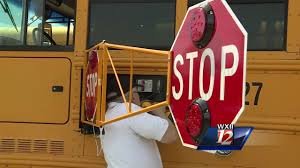
bus stop sign
Understanding the Purpose of a Bus Stop Sign
A bus stop sign may appear simple, but it plays a crucial role in public transportation systems. It serves as a point of communication between transit authorities and passengers, indicating exactly where buses will pick up and drop off riders. These signs also ensure that transit operates in an organized and safe manner, guiding traffic and reducing confusion for both drivers and commuters. As a part of urban infrastructure, a bus stop sign contributes to a city’s rhythm, accessibility, and civic design.
Core Features of a Bus Stop Sign
Bus stop signs typically include several elements: a clear bus icon or logo, the bus route number(s), operating agency name, and sometimes timetables or QR codes. In most cities, the signs are mounted on poles for visibility and are placed according to traffic regulations and accessibility standards. Materials vary but often include aluminum, steel, or high-density plastic, all designed to withstand weather, vandalism, and frequent urban use. The typography and color choices are made to ensure maximum readability, especially from a distance.
Types of Bus Stop Signs
There are several types of bus stop signs, each designed for specific functions. The most common include:
- Standard fixed signs: Display route number and agency info
- Digital signs: Show live arrival information using LEDs
- Temporary signs: Used during construction or detours
- Shelter-integrated signs: Attached to covered bus shelters for weather protection
Each type must comply with municipal signage guidelines and federal standards like those outlined in the Manual on Uniform Traffic Control Devices (MUTCD).
Design and Visibility Standards
To be effective, a bus stop sign must be highly visible in all lighting and weather conditions. Reflective coatings are often used to make signs easy to spot at night. Signs are usually placed at a height of 7–9 feet above the ground and set 2 feet from the curb. Bold, sans-serif fonts like Helvetica or Arial are commonly used for maximum legibility. Color schemes are designed to stand out without overwhelming: blue and white, red and black, or green and silver combinations are typical across global cities.
Compliance and Accessibility
Bus stop signage must comply with ADA (Americans with Disabilities Act) regulations to ensure access for all individuals, including those with visual or mobility impairments. This includes height, spacing, and clear zones around the stop. In some cases, braille panels or audio assistance buttons are included to serve the visually impaired. Local transit agencies are responsible for maintaining accessibility compliance and updating signs when services change or routes are modified.
Materials and Durability
The materials used in making bus stop signs must endure various urban and natural challenges—sunlight, rain, snow, pollution, and vandalism. Common choices include:
- Aluminum: Lightweight, rust-proof, highly reflective
- Galvanized steel: Extremely durable and theft-resistant
- High-density polyethylene (HDPE): Flexible and impact-resistant
- Acrylic or polycarbonate panels: Often used for enclosed bus shelters
These materials are selected not only for function but also for cost-efficiency, ease of replacement, and environmental performance.
Technological Advancements in Bus Stop Signage
Modern cities are integrating smart technology into their transit signage. Digital bus stop signs can display live arrival times, service alerts, route maps, and even emergency messages. Some include solar panels for energy efficiency, while others have NFC (Near Field Communication) chips that allow users to tap their smartphones and receive real-time transit data. Agencies like Transport for London (TfL) and New York’s MTA have deployed thousands of such smart signs across their networks to improve customer experience and operational efficiency.
Role in Urban Planning
Bus stop signs play a significant role in broader urban planning. Their placement influences pedestrian traffic, accessibility, and even business activity nearby. A well-marked, clearly visible bus stop encourages public transit use and reduces reliance on cars. In addition, their design can reflect a city’s character—some cities adopt minimalist signs, while others incorporate cultural elements or local art. For example, Seattle’s Metro signs use pictograms and regional colors to align with the city’s identity.
Advertising and Branding Potential
Bus stop signs and adjacent structures like shelters often double as advertising spaces or locations for public announcements. Transit agencies lease space on these signs for commercial use, generating additional revenue. Some companies use digital ads that rotate content based on time of day, weather, or demographics. Branding is also possible through agency logos and color schemes—ensuring that signs act as an extension of the agency’s visual identity.
Cost and Maintenance
The cost of installing a bus stop sign varies by location, material, and features. A basic aluminum sign may cost as little as $150, while digital smart signs can exceed $5,000 each. Maintenance includes regular inspections, graffiti removal, and timely updates to route numbers or schedules. Agencies often use asset management systems to track signs across the city and prioritize repairs. Vandalism and wear-and-tear are common challenges, requiring durable design and prompt servicing.
Cultural Significance and Recognition
Though often overlooked, bus stop signs hold cultural value. They become part of daily routines, landmarks for communities, and even symbols in photography and media. In cities like London, the roundel bus stop sign is iconic. In Japan, signs often include artistic elements or unique fonts. These small pieces of infrastructure communicate information, identity, and trust—connecting people not just physically but socially.






